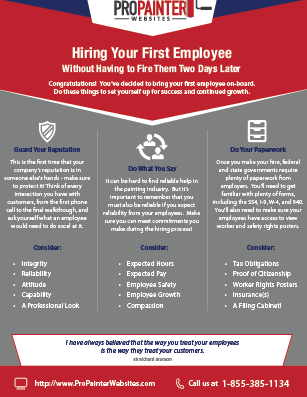Discover Just How Seasonal Variables Affect Industrial Exterior Paint Success And Uncover The Best Times To Ensure Long-Term Outcomes For Your Project
Discover Just How Seasonal Variables Affect Industrial Exterior Paint Success And Uncover The Best Times To Ensure Long-Term Outcomes For Your Project
Blog Article
Material Composed By-Aguilar Urquhart
When you're planning an industrial outside paint project, seasonal elements can make or break your results. You'll wish to think about how temperature level and humidity impact paint application and drying out times. Selecting fence and deck staining can guarantee your paint sticks appropriately and lasts much longer. However which seasons are genuinely the most effective for this kind of job? Let's discover the crucial elements that can affect your project's success.
The Effect of Temperature on Paint Application
When you're intending a commercial external paint job, the temperature level can significantly affect exactly how well the paint sticks and dries out.
Ideally, visit the following website intend to repaint when temperature levels range between 50 ° F and 85 ° F. If it's too cool, the paint might not cure effectively, bring about concerns like peeling off or cracking.
On the other side, if it's too hot, the paint can dry out also swiftly, stopping correct attachment and leading to an uneven surface.
You should also think about the moment of day; morning or late afternoon supplies cooler temperatures, which can be much more desirable.
Constantly inspect the supplier's suggestions for the certain paint you're utilizing, as they frequently offer support on the ideal temperature array for optimum results.
Moisture and Its Impact on Drying Times
Temperature isn't the only ecological factor that influences your commercial exterior painting job; moisture plays a substantial role too. visit the site can reduce drying times substantially, impacting the general top quality of your paint task.
When the air is saturated with dampness, the paint takes longer to heal, which can result in issues like inadequate bond and a greater threat of mildew growth. If you're painting on a particularly damp day, be planned for extended wait times between coats.
It's crucial to check regional climate condition and plan appropriately. Ideally, go for humidity degrees in between 40% and 70% for optimal drying out.
Maintaining these factors in mind ensures your project stays on track and delivers a long-term finish.
Best Seasons for Commercial Outside Paint Projects
What's the best time of year for your industrial external paint tasks?
Springtime and very early autumn are usually your best options. During these periods, temperatures are moderate, and humidity degrees are typically reduced, developing optimal problems for paint application and drying.
Prevent summertime's intense heat, which can create paint to dry as well swiftly, leading to bad bond and surface. In a similar way, winter's cold temperatures can impede appropriate drying out and treating, taking the chance of the longevity of your paint work.
Go for days with temperature levels between 50 ° F and 85 ° F for optimal results. Remember to check the regional weather prediction for rainfall, as damp problems can spoil your job.
Preparation around these factors ensures your painting project runs smoothly and lasts much longer.
Final thought
To conclude, planning your commercial outside paint projects around seasonal factors to consider can make a substantial distinction in the result. By organizing job during the ideal temperature levels and moisture levels, you'll make sure far better adhesion and drying out times. Remember to watch on neighborhood weather report and pick the correct time of year-- springtime and early loss are your best options. Taking nearby painting contractors will aid you attain a long lasting and professional surface that lasts.
